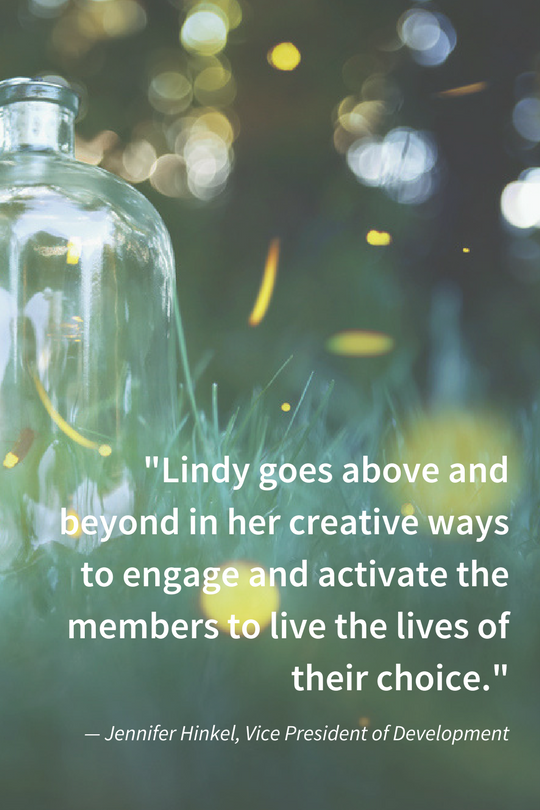Transforming Everyday Household Products Into Hygiene Kits and More
/When Lindy Cain sees baking soda and vinegar, she doesn't just see an elementary science project in the making; Lindy sees an opportunity to teach the members of Â黨ɫÇéƬ's how to make a variety of household products in her DIY group hosted at the program every week.
Lindy Cain, Team lead at Â黨ɫÇéƬ's Sierra Vista Act, makes bug repellant from household items at her diy group session.
"I taught our group how to clean their entire house with baking soda and vinegar," said Lindy. "I mostly focus on household and hygiene products. We do laundry soap every couple of months, we do dish soap, we've made dandruff shampoo, we make face lotion, face wash, face scrub, chap stick."
The DIY products are easy to make and use low-cost ingredients, most of which can be bought with food stamps or EBT funds.
"Many of the members don't have much money, and the money they do have, they need it for other things. I try to make things that our members don't normally have and can help them out in the community," said Lindy.
One of the members was having trouble walking on the weekly mile-long hikes they would take as part of a health and wellness curriculum at the program. The member's heels were scaly and cracked, which made it painful to walk long distances. He tried using a salve the doctor prescribed, but it didn’t work. Lindy looked up how to make foot salves and found a recipe for one that included magnesium.
“We melted magnesium flakes into water with oregano oil, beeswax, and water to make a lotion," said Lindy. "He started using it and his feet cleared up, which remedies had never done before. Now he can go on walks and exercise and his feet feel good."
"Lindy goes above and beyond in her creative ways to engage and activate the members to live the lives of their choice," said Jennifer Hinkel, Vice President of Development at Â黨ɫÇéƬ. "I participated in a DIY session where members were making a bug repellant lotion out of beeswax, coconut oil, baking soda, lemongrass, and lavender. Since many of our members walk or spend time outside, they really appreciated the session and the product that they could take and use that day."
For ideas and recipes, Lindy says she looks mostly on Pinterest, , or . Members also come to her and pitch ideas to replicate items they like to see if they can make them in the DIY group.
"It's skill-building and it’s also socializing with other members and myself, while they are learning about things in the environment. They enjoy learning about the different oils and the different properties and what they are used for," said Lindy.
Setting up a DIY group is easy, said Lindy. If you're interested in trying one at your program, Lindy provided some helpful tips for getting started.
How to Start a DIY Group
Buy ingredients in bulk. Lindy uses Amazon and Sam’s Club to purchase larger items at a lower cost.
Don't think too hard about containers. For dish soap, Lindy uses water bottles. For laundry soap, you can use plastic bags. You can also use portion cups, like for condiments, which you can buy in bulk at Sam's Club.
Just do some research and don’t be afraid of it — it's really easy.
Products the DIY group make include lavender, coconut and honey soap, lotions, face scrubs and much more!




